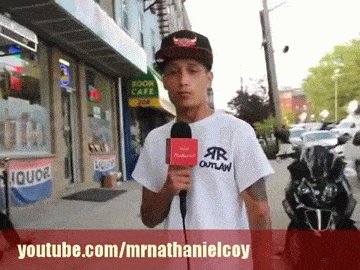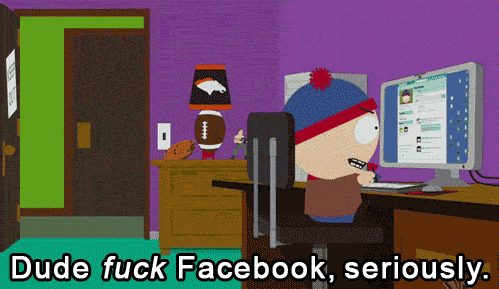In “Small Change,” Malcolm Gladwell seems to throw a wrench in the dreams of techno-utopians who claim to have solved the problems of civil society through networked computers. And he makes a compelling case. The crux of his argument rests upon differences in classes of interpersonal connections, the differences between what he calls “weak-ties” and “strong-ties.” Gladwell masterfully paints a comparison between two very different kinds of activism where these different types of connections draw stark dividing lines: the Greensboro sit-ins during the American civil rights movement and internet-enabled activism such as Sameer Bhatia’s Bone Marrow Drive.
Gladwell accurately points out that the reason Bhatia’s drive was successful is because the internet enables large networks of weakly connected individuals to unite around an effort: in this case saving Bhatia from leukemia. Gladwell also accurately points out that these sorts of networks, when faced with actions more along the lines of rising up against a totalitarian government than being tested for a bone marrow match, crumple under the pressure and risk involved in taking such actions.
Gladwell is right. Weakly tied networks formed solely over the internet are not well equipped for the kind of high-risk activism required to make lasting change in civil society. Yet, this is as far as his argument holds up, and the conclusions he draws from then on rest on the ashes of the straw man that Gladwell has set ablaze.
Gladwell takes his argument that weak ties cannot produce movements that create real change and projects it upon the entirety of online activism. He assumes that no movement which takes place online can be anything but a weakly tied network of slacktivists liking the ‘Save Darfur’ page on Facebook and then going about their daily lives. Yet, why does this have to be the case?
Somewhere in Gladwell’s chain of logic is the assumption that equates online activism with weak ties. Since Gladwell himself does not back up this claim, he leaves it to the reader to believe him on face value. Let’s probe into this a little and see why it certainly is not a claim that is obviously true, or even likely true.
Activists have been around as long as society has existed. People who are willing to place their ideals above themselves and make it their mission to organize a movement which enacts those ideals have been the lifeblood of societal change throughout history. And, as Gladwell points out, behind almost all of those successful movements lies strong-ties which bind together those activists and enable them to persevere through the difficulties on their path towards success. So why do these people suddenly go away in a world that includes Facebook and Twitter?
The only argument that would explain a sudden absence of heavily committed and strongly connected activists is the hypothesis that people who would have joined such strongly connected networks of activists will now do nothing more than like a Facebook page. But that is nothing more than an unlikely hypothesis with absolutely no evidence to back such a claim. Why would someone who previously cared enough about an issue to scream into the barrel of a gun now settle for liking something on facebook?
In fact, the emergence of social media is not the first time we have seen people worry that a society’s modern technology would prevent activists from going to the streets and taking the risks required to bring their ideals to society. In 1970 amid the height of the same movement that Gladwell points to as the epitome of strong-ties, Gil Scott-Heron wrote in a famous poem that Gladwell makes a nod to:
“You will not be able to stay home, brother
You will not be able to plug in, turn on and cop out
You will not be able to lose yourself on skag
And skip out for beer during commercials
Because the revolution will not be televised”
One of his concerns was that America’s consumer-oriented and television-drenched culture would prevent people from leaving the comfort of their armchairs and going to the streets to fight for their ideals instead of watching others on their television sets. Sound familiar? Yet, amid those concerns, there were still strongly connected networks who boycotted buses in Montgomery and sat at whites-only counters in Greensboro. In fact, the revolution was televised, but people still showed up to the streets instead of watching from their armchairs
If we’ve seen this sort of concern before, and it has proven to be false, then Gladwell’s argument must imply that social media is categorically different from any of the other technologies that could have had civic-numbing effects on people in the past. In the article, Gladwell explains that:
“It is simply a form of organizing which favors the weak-tie connections that give us access to information over the strong-tie connections that help us persevere in the face of danger. It shifts our energies from organizations that promote strategic and disciplined activity and toward those which promote resilience and adaptability. It makes it easier for activists to express themselves, and harder for that expression to have any impact.”
But in reality, the evidence that does exist seems to show the opposite.
In a talk entitled Now I Know Who My Comrades Are, Emily Parker makes the argument for three important ways that the internet and social media empower, rather than hinder, strongly connected networks of activists taking taking great risks. From talking to activists in Russia, Cuba and China, Parker observes that the internet has undermined three of the most powerful tools of totalitarian regimes: Isolation, Fear and Apathy.
Parker tells the story of Anti, a Chinese citizen who became a dissident after downloading the video of the 1989 crackdown on protestors in Tiananmen Square off of a site on the internet. As a dissident in a one-party state, he turned to the internet as the only place where he “knows where his comrades are.” Parker also tells the story of Laritza Diversent, a dissident blogger in Cuba. After Diversent began publishing blogs penned under her own name about the problems under Castro’s rule, she entered an initial state of fear as she became the object of government surveillance. Yet the more she blogged, the more she realized that becoming a public voice of a dissent in an international community made it much harder for the government to make her disappear. Parker also tells the story of Alexei Navalny, a Russian dissident who realized that the most difficult problem he had to overcome was the apathy of the Russian people and the cynicism in the idea that they could ever improve their government without being trampled. Navalny provided a form of “comfortable struggle” using techniques that Gladwell would likely deride as slacktivism, and his act of doing so led to small victories that began to combat the plague of apathy and cynicism.
As the story of Anti shows, the internet empowers activism because it becomes nearly impossible for those in power to disconnect activists and force them into isolation in a modern connected world. As Diversent’s story highlights, the internet provides activists in a totalitarian regime with the ability to express dissent while affording them enough protection that they don’t have to live life in a state of perpetual fear. And the epitomical slacktivism that Navalny used in Russia highlights a powerful tool to combat cynicism in an oppressed people, reassuring and empowering them that they are not alone and that they are not helpless.
But internet activism isn’t only useful to those living under a totalitarian regime. Weakly connected networks of people showing support through ‘likes’ and tweets have an important empowering effect on activists of any kind. Showing people that they are not alone in their beliefs has the psychological effect of encouraging the leaders of movements and those strongly tied into them to push through adversity because they are fighting for a cause that is bigger than themselves and their immediate network. And those in the weakly connected network watching from their armchairs are now tied into a media feed which gradually shifts their public perception.
So what explains Gladwell’s complaints? Zeynep Tufekci, in her talk entitled Movements in a Connected Age: Better at Changing Minds, Worse at Changing Power makes a helpful analogy between what the internet does for movements and what Sherpas do for mountain climbers. They both make it easy to do what was once extremely difficult. Organizing thousands of people used to require large amounts of hierarchy, strategy, media production and logistics. This barrier used to serve as a filter for those who could reach a certain level of attention. With the internet, that barrier is lowered. Like the Sherpas of Mt. Everest, the internet enables many people or movements to reach heights they would otherwise be unprepared to reach. But success in activism requires climbing many peaks: gaining public attention, forcing legislative action, changing cultural norms, etc. When those guided by a Sherpa arrive at one peak and realize that they must climb the others alone, only some are able to continue. Gladwell happens to study the ones that can’t, but successful movements like the January 25 Revolution in Egypt, Occupy, and even ISIS show that many others can.

















